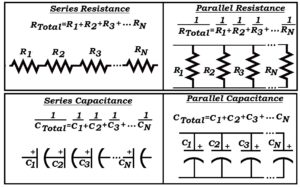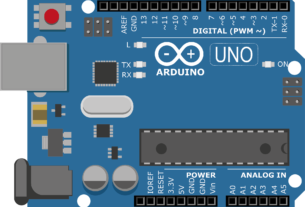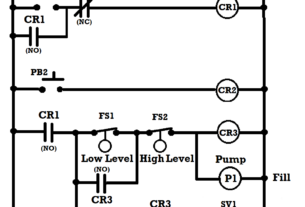Capacitance
Up to now the discussion has been primarily about resistance. We will concentrate on theoretical practical capacitance in this post. . First we need to review some terms and definitions. When the Atoms of a material have less than four outer shell electrons (Valence electrons) the material is a conductor. Materials made up of atoms with four valence electrons are classified as semiconductors. Materials made up of atoms with more than four valence electrons are classified as insulators.
Charge is the fundamental quantity of electrical force. An atom is positively charged if it has fewer electrons than protons and negatively charged if it has more electrons than protons.(measured in Coulombs)
Electric current is defined as charge in motion. Electron current is from negative potential to positive potential. Positive charge(hole ) flow is from positive potential to negative potential.
Capacitance is defined as the ability to store electrical charge(measured in Farads)
Resistance—The opposition to current flow(measured in Ohms)
Conductance—The reciprocal of resistance = 1/R (measured in Mhos)
Dielectric—A material that has the ability to store a charge on its outer surface
Active devices— Devices that add to or amplify power in a circuit including such devices as Bipolar transistors, Field Effect Transistors, tunnel diodes, thyristors, and certain vacuum tubes.
Passive devices— Passive components are those that don’t introduce net energy into a circuit. Devices in this category include two-terminal components such as resistors, capacitors, inductors, and transformers.
Now to get to the main topic. A capacitor is a passive two-terminal electrical component that stores electrical energy in an electrostatic field. The effect of a capacitor is known as capacitance. A Capacitor is constructed of two conductors separated with a dielectric. The amount of capacitance of the device depends on the distance between the plates, the area of the plates, the dielectric constant, and the permeability of the dielectric.
The basic rule is that capacitors block DC and pass AC.


Most of the various electrical quantities are extremely small or extremely large. Theoretical practical capacitance is no exception. To make calculations easier metric prefixes are used.









